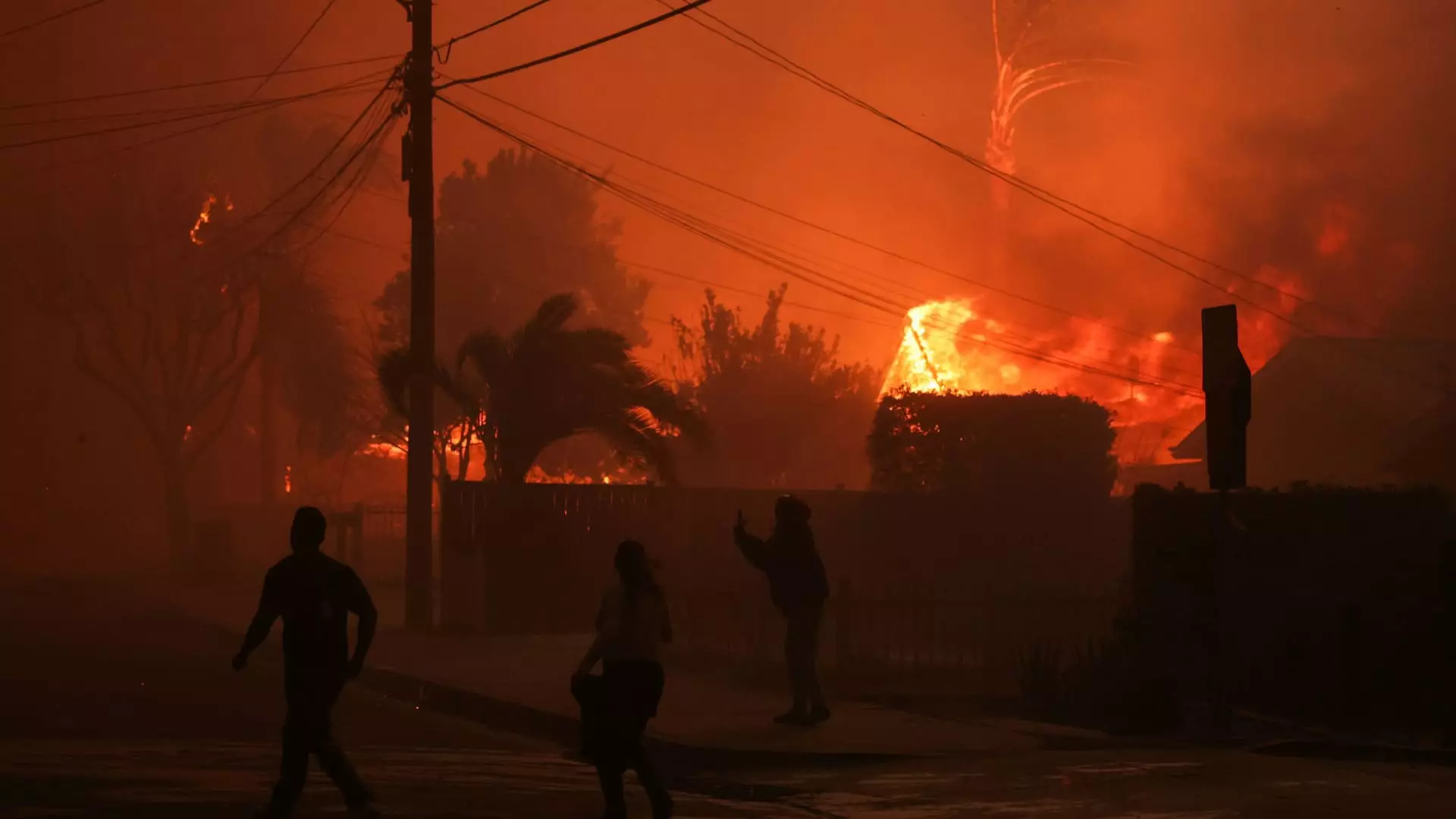The ongoing wildfires in California, particularly around the Los Angeles area, have raised significant concerns among investors, especially regarding utility companies like Edison International. As an electricity provider for Southern California, the utility’s stock price experienced a steep decline—down 12% in one afternoon of trading—reflecting the anxiety permeating through the markets. This situation underscores how environmental disasters can directly influence financial stability and investor confidence in utility stocks.
As wildfires rage across the region, the repercussions are severe not just for companies, but for communities and residents as well. Tens of thousands have been ordered to evacuate, with tragic reports of loss of life. The ongoing crisis has led to widespread power outages, affecting nearly 70,000 customers of Edison as of the latest reports. This direct impact on the populace places additional pressure on utility companies, reflecting on their operational reliability during such critical times.
Historical Context: A Precedent for Utility Concerns
The current environment is reminiscent of past wildfire incidents in California, which have historically had dire financial ramifications for utility companies. Notably, Pacific Gas and Electric Company (PG&E) filed for bankruptcy in 2019 primarily due to their liabilities associated with similar catastrophes. While PG&E has since emerged from bankruptcy, the scars of those events still linger in the minds of investors. The California state law, AB 1054, established in 2020, aims to mitigate some of the financial risks to utility firms by limiting liabilities going forward, but concerns remain about the implications of ongoing fires.
Market Reactions: An Investor’s Dilemma
Investor sentiment has turned cautious following the current wildfires, marked by a ‘sell first, ask questions later’ mentality. Analysts note that the uncertainty surrounding these incidents has created a ripple effect across other utility stocks in California. Sempra, involved in both power and gas distribution in San Diego, saw a 3% drop in its share price, while PG&E’s restructured shares fell by 4%. This widespread downturn emphasizes the interconnected nature of utility stocks in response to regional disasters.
Moving forward, the focus will likely remain on how utility companies can effectively manage risks associated with wildfires. With some protections now in place due to AB 1054, investors are somewhat less fearful of catastrophic liabilities. Nevertheless, the ongoing fires are a stark reminder of the volatile interplay between natural disasters and utility operations. While analysts express a degree of cautious optimism due to regulatory changes, the immediate challenges underscore the need for better risk management strategies and infrastructure resilience among utility providers going forward.
The wildfires in California depict a complex landscape marked by human suffering, market volatility, and the imperative for utility companies to reinforce their operational frameworks against potential risks. As the situation develops, both investors and utility companies must remain vigilant, adapting their strategies to meet the uncertainties ahead.

